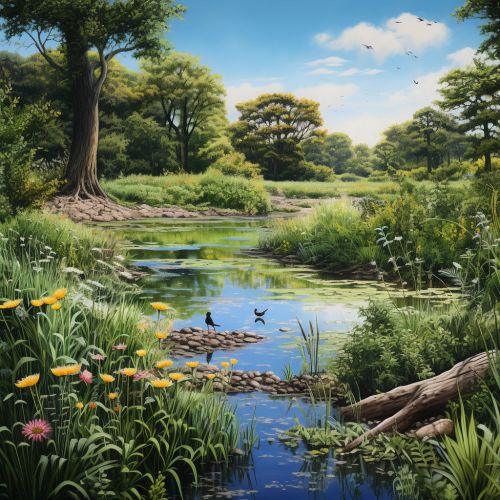Restoration ecology
Introduction
Restoration ecology is a scientific field that focuses on the repair and recovery of degraded, damaged, or destroyed ecosystems and habitats in the environment. This is primarily achieved through human intervention and action, often using various forms of ecological engineering. The goal of restoration ecology is to restore the functionality of the ecosystem so that it can sustain itself.


History
The field of restoration ecology emerged in the late 20th century, in response to the increasing degradation of the natural environment due to human activities. It was initially a sub-discipline of ecology, but has since evolved into a distinct field of study. The term "restoration ecology" was first coined by William R. Jordan III, a pioneer in the field, in the 1980s.
Principles
Restoration ecology is guided by several key principles. These include the need to restore ecosystems to a state that is similar to their condition before disturbance, the importance of maintaining biodiversity, and the necessity of ensuring that restored ecosystems are resilient and can adapt to changing environmental conditions.
Techniques
There are various techniques used in restoration ecology, depending on the specific ecosystem and the extent of the damage. These can include reforestation, erosion control, removal of non-native species, reintroduction of native species, and habitat and wildlife management.
Challenges
Restoration ecology faces several challenges. These include the difficulty of determining the original state of an ecosystem, the complexity of ecosystems and their interactions, and the need for long-term monitoring and management.
Future Directions
The future of restoration ecology is likely to involve more integrated approaches that consider the social, economic, and cultural aspects of ecosystem restoration. There is also a growing recognition of the need for global cooperation and action in order to address the widespread degradation of the world's ecosystems.
